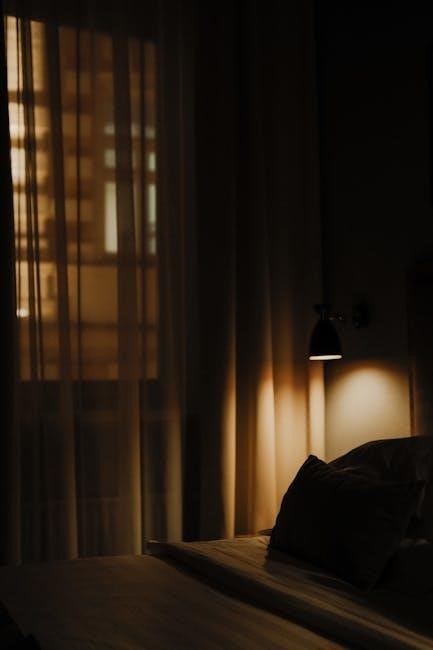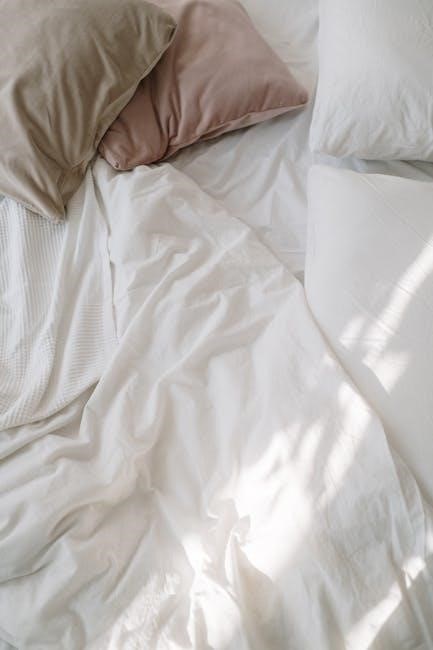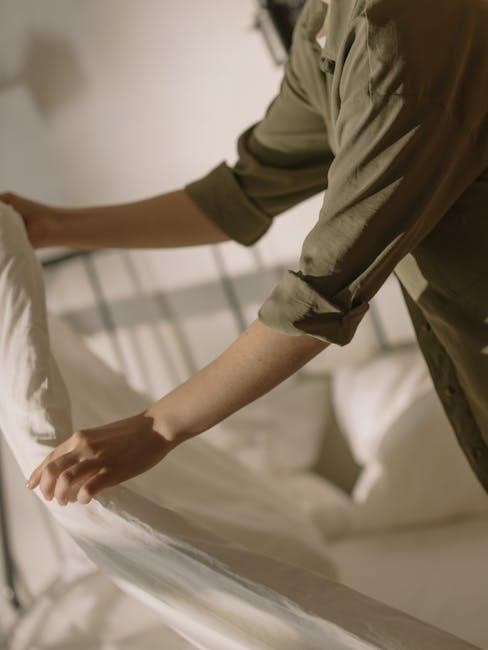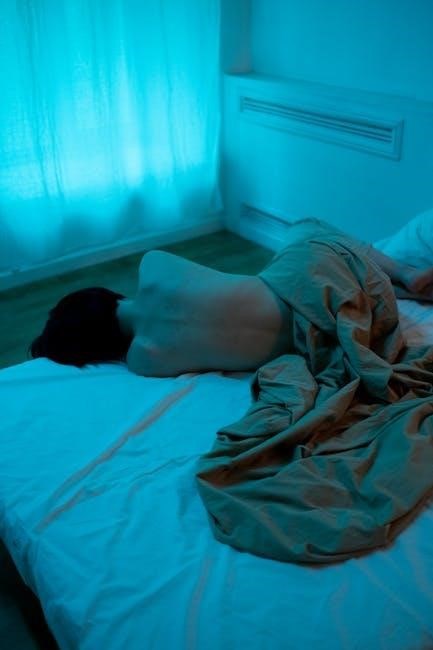What is a Sleep Sack?
A sleep sack, also known as a sleep bag, is a spacious, wearable blanket designed for infants and toddlers to promote safe and comfortable sleep.
Why Use a Sleep Sack?
It helps regulate body temperature, prevents rolling over, and replaces loose bedding, ensuring a secure and cozy sleeping environment for your child.
A sleep sack, also known as a sleep bag, is a specially designed garment for infants and toddlers. It is essentially a spacious, wearable blanket that allows for easy movement while keeping the child warm and comfortable. Sleep sacks are crafted with various materials, offering different weights and designs to suit different needs and preferences. They are intended to provide a safe and cozy sleeping environment, helping little ones sleep soundly through the night.
A sleep sack is an excellent choice for promoting safe and comfortable sleep for infants and toddlers. It helps regulate body temperature, preventing overheating or chilling, and reduces the risk of rolling over or getting tangled in loose bedding. Additionally, it provides a sense of security and comfort, mimicking the womb-like environment, which can improve sleep quality. Parents appreciate its convenience, as it eliminates the need for multiple blankets and ensures a cozy night’s sleep for their little ones.

Benefits of Using a Sleep Sack
Sleep sacks promote safe sleep practices, improve comfort, and offer convenience for parents. They regulate body temperature, prevent rolling, and replace loose bedding, ensuring a secure sleep environment.
Improved Sleep Quality
Sleep sacks significantly enhance sleep quality by maintaining a consistent body temperature, reducing the risk of overheating or chilling. They prevent infants from rolling onto their stomachs, lowering the risk of SIDS. The snug, cozy design mimics the womb, promoting deeper sleep cycles and reducing restlessness. Additionally, sleep sacks minimize disruptions caused by loose bedding, ensuring a safer and more comfortable environment for uninterrupted rest.
Enhanced Safety for Infants
Sleep sacks prioritize infant safety by eliminating the need for loose bedding, which can pose suffocation risks. They prevent overheating, a key factor in SIDS, by regulating body temperature. The secure design keeps babies on their backs, reducing the risk of rolling onto their stomachs. Sleep sacks also ensure that infants’ heads remain uncovered, promoting safe sleep practices. This makes them a reliable choice for parents seeking to create a hazard-free sleeping environment.
Increased Comfort
Sleep sacks provide exceptional comfort for infants by allowing natural leg movement and preventing overheating. Made from soft, breathable materials, they create a cozy sleeping environment. The loose fit ensures babies can stretch and move freely, while the enclosed design keeps them snug. This balance of freedom and security helps infants sleep more peacefully, reducing restlessness and discomfort. The sack’s material wicks away moisture, maintaining a consistent body temperature for uninterrupted rest. This makes sleep sacks a superior choice for promoting comfort and relaxation.
Convenience for Parents
Sleep sacks simplify bedtime routines, offering ease of use for parents. They eliminate the need for multiple blankets, ensuring a consistent and safe temperature. Lightweight and breathable materials keep babies comfortable year-round. The design allows for quick diaper changes without fully undressing, saving time. Sleep sacks are easy to care for, with machine-washable options. They also promote better sleep for both baby and parents, reducing nighttime disturbances. This practical solution makes bedtime less stressful, ensuring a restful night for the whole family while keeping safety and comfort a priority.

Choosing the Right Sleep Sack
Selecting the right sleep sack involves considering size, material, and design. Ensure proper fit for comfort and safety, and opt for breathable fabrics to regulate temperature effectively.
Factors to Consider
When choosing a sleep sack, prioritize your baby’s comfort and safety. Consider their age, size, and sleep preferences. Opt for breathable, natural fabrics like cotton or bamboo to prevent overheating. Ensure the sack has a snug yet comfortable fit to avoid slipping off. Check for features like zipper closures and adjustable arm holes for ease of use. Additionally, look for sleep sacks with TOG ratings suitable for your climate. Safety standards, such as no loose threads or small parts, are essential to ensure a risk-free sleeping environment for your child.
Size and Fit
Ensuring the right size and fit is crucial for your baby’s comfort and safety. Sleep sacks come in various sizes to accommodate different age groups and body types. Choose a sack that allows for natural leg and arm movement while fitting snugly around the body. Avoid oversized sacks that may cause your baby to slip inside. Consider adjustable features like zippers or Velcro for a customizable fit. Proper sizing ensures the sack stays in place, preventing it from riding up or bunching uncomfortably during sleep.
Material and Breathability
Sleep sacks are typically made from soft, breathable materials like cotton, bamboo, or muslin to ensure comfort and regulate body temperature. Natural fibers allow for airflow, reducing the risk of overheating. Look for lightweight fabrics suitable for warmer climates and thicker options for cooler environments. The material should be gentle on your baby’s skin to prevent irritation. Opt for breathable weaves that wick moisture away, keeping your baby dry and comfortable throughout the night. Proper breathability ensures a safe and restful sleep experience for your child.
Design and Features
Sleep sacks are designed with safety and comfort in mind, offering various styles to suit your baby’s needs. They come in sleeveless or footed options, allowing for flexibility in different climates. Many feature zip closures or adjustable snaps for easy changes, while inverted zippers enable quick access for diaper changes. Look for designs with interior pockets to keep small items close. Eco-friendly and organic options are also available, catering to parents who prioritize sustainability. These features ensure a practical and cozy solution for your child’s sleep needs.

Safety Guidelines
Ensure proper fit to avoid suffocation risks, keep bedding loose-free, and monitor temperature. Choose breathable materials and adhere to safety standards to reduce SIDS risks and ensure safe sleep.
Safety Standards
Sleep sacks must meet strict safety standards to reduce risks of SIDS and suffocation. Ensure the sack is made from breathable, lightweight fabrics and has no loose bedding.
Choose products with snug fits to prevent slipping and avoid oversized sacks that could trap heat. Adhere to guidelines from pediatric organizations to ensure safety. Always check for certifications and follow care instructions to maintain product integrity. Prioritize sacks with minimal padding and secure zippers to enhance safety. Proper fit and breathable materials are crucial for safe sleep environments.
Features to Look For
When selecting a sleep sack, look for adjustable zippers for easy diaper changes and a snug, ergonomic design for comfort. Opt for breathable fabrics like cotton or bamboo to regulate temperature. Consider TOG-rated sacks for different seasons and ensure the material is soft and gentle on skin. Check for secure fasteners to prevent accidental openings. Some sacks offer convertible designs, growing with your child. Dual zippers and seamless construction enhance convenience and durability, ensuring a practical solution for bedtime routines.
Common Mistakes to Avoid
Avoid over-layering clothing under the sleep sack to prevent overheating. Ensure the sack fits properly, not too tight or loose, to maintain safety and comfort. Never add loose bedding or blankets, as this can pose a suffocation risk. Avoid using sleep sacks with hoods, as they may obstruct breathing. Don’t select sacks with small gaps at the neck or arms, which can cause the baby’s head or limbs to slip in. Always prioritize breathable, non-restrictive materials to ensure safe sleep practices for your child.

How to Use a Sleep Sack
Dress your baby in light clothing, place them in the sack feet first, and ensure the neck opening is snug. Monitor room temperature to prevent overheating.
Putting It On Correctly
To put a sleep sack on your baby, start by ensuring their clothing is light and breathable. Place your baby into the sack feet first, aligning their shoulders with the neckline. Gently pull the sack up, making sure the neck opening is snug but not too tight. Fasten any zippers or snaps securely, starting from the bottom and working your way up. Ensure your baby’s arms are either inside or through the arm holes, depending on the design. Finally, check that the sack is not bunched up and allows for comfortable movement. Proper fit is key for safety and comfort.
Maintaining the Right Temperature
Maintaining the right temperature is crucial for your baby’s comfort and safety. Choose a sleep sack with a TOG rating suitable for your room’s temperature—lightweight for summer and thicker for winter. Dress your baby in breathable, moisture-wicking fabrics like cotton or bamboo. Avoid overdressing, as this can lead to overheating. Check your baby’s neck and hands for comfort; they should feel warm but not sweaty. Ensure the room temperature is between 68-72°F (20-22°C) for optimal sleep conditions. Adjust layers as needed to keep your baby cozy and safe.
When to Stop Using It
Know when to transition your baby out of a sleep sack. Stop using it when your child can roll over independently, typically around 6-12 months, or shows interest in moving freely. If your baby outgrows the sack or consistently tries to climb out, it’s time to discontinue use. The American Academy of Pediatrics recommends stopping when your child can get out of the sack, as it may pose an entanglement risk. Transition gradually to a toddler blanket or pajamas to ensure a smooth adjustment to independent sleeping.

Alternatives to Sleep Sacks
Alternatives include swaddles, footed pajamas, or lightweight blankets. These options provide similar comfort and warmth but may lack the safety and convenience of sleep sacks.
Other Sleep Solutions
Besides sleep sacks, parents can opt for swaddles, footed pajamas, or lightweight blankets. Swaddles provide a snug feel, mimicking the womb, while footed pajamas offer ease of movement. Lightweight blankets are breathable and versatile, though they require proper securing to ensure safety. Each option caters to different needs, whether it’s comfort, mobility, or ease of use. Choosing the right one depends on the child’s preferences and developmental stage, ensuring a safe and restful sleep environment.
Comparison with Sleep Sacks
Sleep sacks stand out for their safety and comfort, offering a secure, wearable design that prevents tangling and overheating. Unlike swaddles, they allow natural movement, while footed pajamas may restrict airflow. Lightweight blankets require constant supervision but are highly breathable. Sleep sacks uniquely combine the benefits of these options, providing a balanced solution for safe and restful sleep. Their versatility and ease of use make them a preferred choice for many parents seeking practicality and peace of mind.

Care and Maintenance
Wash sleep sacks in cold water, avoid fabric softeners, and dry on low heat. Store in a cool, dry place to maintain quality and breathability.
Washing Instructions
For optimal care, wash sleep sacks in cold water using a mild detergent. Avoid fabric softeners and bleach, as they can damage the material. Gently cycle or hand-wash to preserve the fabric’s integrity. Tumble dry on a low setting or air-dry to prevent shrinkage. Remove promptly after washing to avoid wrinkles. Do not iron, as high heat can harm the fabric. Regular washing maintains hygiene without compromising comfort or safety. Proper care ensures the sleep sack remains durable, breathable, and snug for your baby’s peaceful sleep.
Storage Tips
Store sleep sacks in a cool, dry place, away from direct sunlight. Fold or roll them neatly to save space and prevent creases. Use breathable containers like cotton bags or baskets to maintain airflow. Avoid plastic bags, as they can trap moisture and cause mildew. Ensure the sleep sack is completely dry before storing to prevent odors. Keep out of reach of pests and dust. Proper storage extends the lifespan of the sleep sack, ensuring it remains soft and comfortable for future use. Regularly inspect stored items for signs of wear or damage.

User Reviews and Feedback
Parents praise sleep sacks for improving their babies’ sleep quality and safety. Many appreciate the ease of use and comfort they provide, making bedtime routines smoother.
What Parents Say
Parents often praise sleep sacks for their ability to improve sleep quality and safety. Many report that their babies sleep more soundly and wake up less frequently. The ease of use and comfort provided by sleep sacks are highlighted as key benefits. Some parents note that sleep sacks helped their little ones transition smoothly from swaddles to independent sleeping. The designs and materials are frequently commended for their softness and breathability, ensuring a cozy experience for infants.
Overall, sleep sacks are widely recommended for their effectiveness in creating a secure and comfortable sleep environment, giving parents peace of mind.
Common Complaints
Some parents mention that sleep sacks can occasionally be too warm, leading to overheating, especially in warmer climates. Others find sizing inconsistent across brands, which can affect fit and comfort. A few users note that certain designs make diaper changes more difficult, while others wish for more adjustable features. Despite these issues, most agree that the benefits outweigh the drawbacks, and minor adjustments often resolve these concerns.
Best-Rated Products
Several sleep sacks are highly praised by parents for their quality and comfort. The Halo Sleep Sack is a top choice, known for its lightweight material and TOG ratings. The SwaddleMe Sleep Sack is another favorite, offering a secure fit and easy diaper access; The SleepSack by Happiest Baby is also popular for its adjustable features and breathable fabric. These products consistently receive high ratings for their safety, comfort, and durability, making them standouts in the market.
Final Thoughts
Sleep sacks are a practical solution for safe and comfortable sleep, offering benefits like improved sleep quality and enhanced safety for infants.
Recommendations
Consider your child’s needs, choose breathable materials, and follow safety guidelines to maximize the advantages of using a sleep sack.
Sleep sacks are a game-changer for parents seeking safe, comfortable, and practical sleep solutions for their babies. They not only enhance sleep quality but also provide peace of mind by reducing risks associated with loose bedding. With proper use, sleep sacks can help establish a consistent sleep routine and ensure your child’s comfort throughout the night. Their versatility in design, material, and size makes them a valuable investment for any family. By prioritizing safety and comfort, sleep sacks offer a worry-free solution for parents and a cozy environment for their little ones.
When choosing a sleep sack, prioritize breathable, natural materials like cotton or bamboo for optimal comfort. Ensure proper fit by selecting the right size for your baby’s age and weight. Opt for designs with safe zippers and minimal embellishments to avoid hazards. Consider the TOG rating to suit your home’s temperature. Washable sleep sacks are practical for long-term use. Always follow safety guidelines and your pediatrician’s advice for the best fit and usage. Investing in a high-quality sleep sack can significantly improve your baby’s sleep and your peace of mind.
